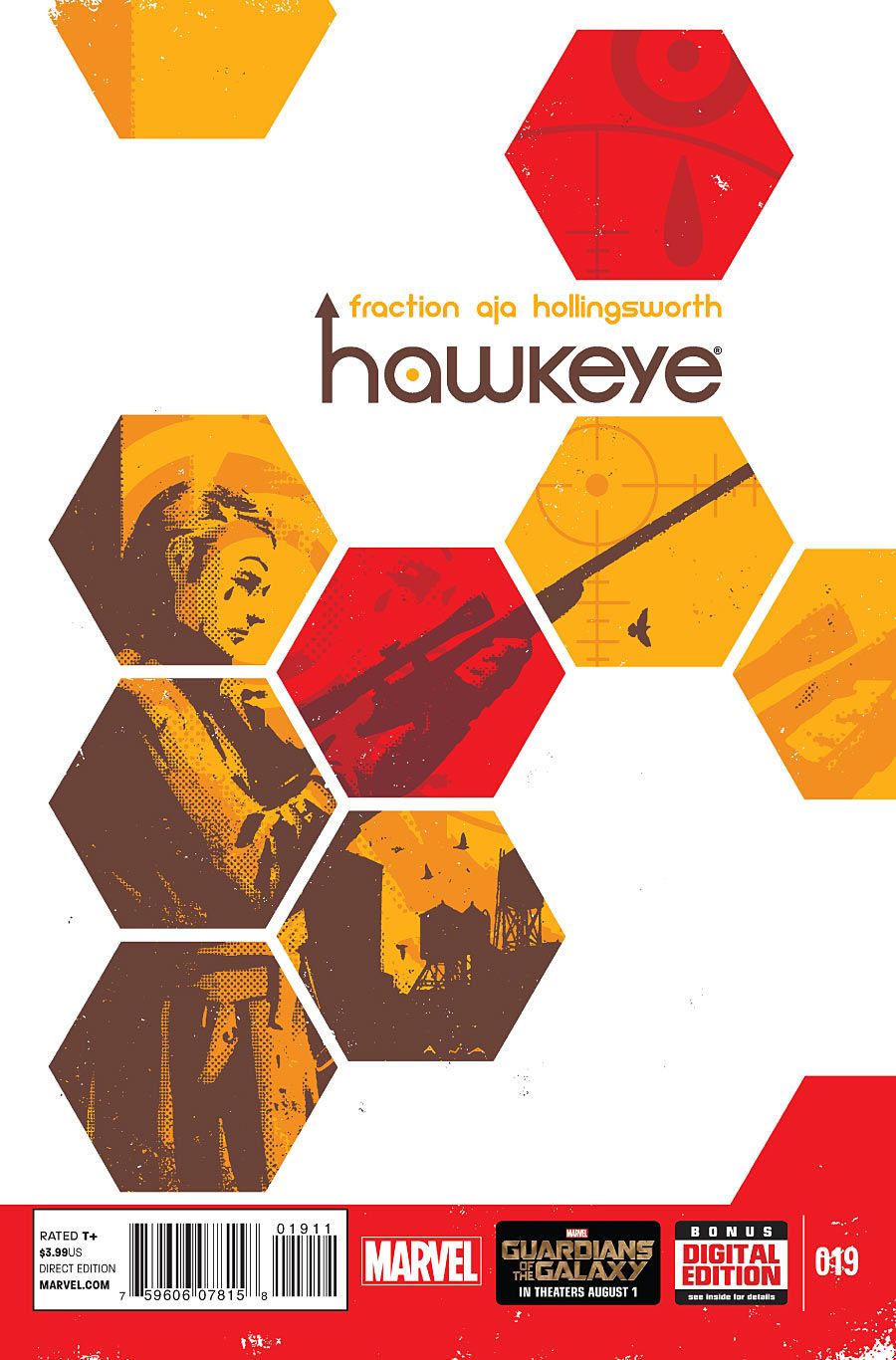In "Hawkeye" #19 by Matt Fraction and David Aja, Clint is deafened from the injuries inflicted by the Bro Gang but his brother Barney may get him to see, if not hear, reason.
"Hawkeye" is like a pop song with one theme repeated over and over in variations: Clint Barton, small-time hero but a hot mess, always overcoming his faults to do good for another day. Luckily, Fraction's wit and prose, and a roster of top-notch artists, keep the song from ever sounding stale. "Hawkeye" #19 doesn't stray from this tune, but in an issue with so many silences, Clint finds a reason to use his voice. The tune wanders into the past and then back to the present, adding deeper shades to Clint's character.
"Hawkeye" #19 is very similar in narrative approach to "Hawkeye" #11, the story from Pizza Dog's point of view, which recently won the Eisner of Best Single Issue. Both stories are experimental in structure and art, its innovations born of a limitation on communication through spoken language. In some ways, "Hawkeye" #19 is less risky because it's dealing with sign language, not dog language, but the focus on Barney and Clint gives it a harsher, more grave tone.
Readers are sometimes conservative in their tastes or wary of experimentation, and it's no surprise as to why. Experiments with form are inherently arrogant and easily become pretentious. They reject what is already known to work. Unusual style or narrative approaches require more work from the reader. Luckily, just as with the Pizza Dog story, "Hawkeye" #19 justifies its daring and rule-twisting with the excellence of its execution.
As ambitious as its concept is, and as spectacular as Aja's artwork and panel design are over the entire issue, the pinnacle of "Hawkeye" #19 -- why the story clicks emotionally -- are the pages in which Fraction and Aja intermittently cut in flashbacks to Barney and Clint's childhood.
Hollingsworth's colors, always solid, are particularly spot-on and valuable in "Hawkeye" #19. He colors young Clint and adult Clint in different palettes. The individual panels are colored cleverly so that they appear to be almost monotone, but actually contain many other hues, mixed in subtly so that they don't interfere with the dominant scheme. Although Aja's de-aging of Clint is successful, his juxtapositions of past/present follow each other so closely that Hollingworth's colors are crucial to clarity. Wisely, the peach tone of the past and the purple-gray of the present are neutral, calibrated just so, such that the reader's eye flickers easily across the page but the shifts in time are obvious.
The climax of "Hawkeye" #19 is when Barney and Clint start to fight with their fists and not just with the words that Clint can barely hear. The story slides imperceptibly into drawing blood, both literally and metaphorically. Barney and Clint were mutual witnesses to their father's physical abuse. All the stylistic tricks, like Fraction's wordplay or Aja's inventive panel compositions, are sometimes a layer over the action, however spectacular the effects. Here, all the artistry is unified in its goals. All the words and the pictures lead into and serve the meaning of the scene.
Aja splices the halves of Clint's face, the child-half and the adult-half across the bottom of a page. The bond of being brothers in a dysfunctional family feels electric in these scenes, and Barney's guidance and tough love of Clint is both brutal and tender. More than even the deafness, the memories of the past lend gravity to the present situation, since Clint's deafness now is a visual and verbal echo of being beaten up by his father. It sheds light on Clint's personality, both in his drive to do good and his stubborn insistence that he doesn't need anyone else.
"Hawkeye" #19 is likely already a contender for the 2015 Eisners, and for good reason. Fraction and Aja have done it again.

